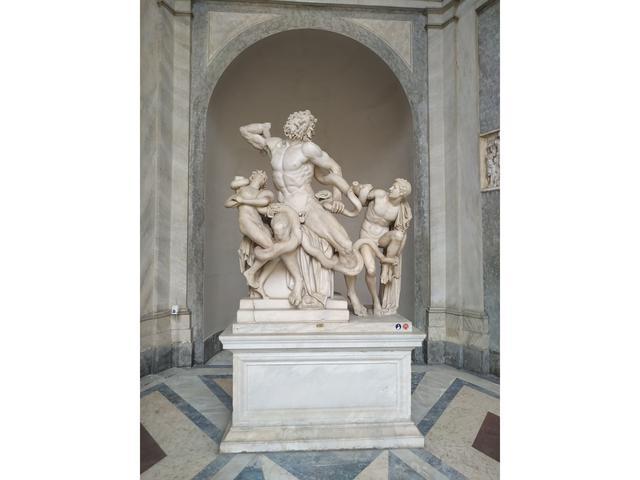Cabinet of the Laocoon

The Cabinet of the Laocoon, also known as the Laocoon Group, is a masterpiece of ancient sculpture that depicts the tragic myth of Laocoon, a Trojan priest, and his two sons being attacked by sea serpents. This iconic sculpture is housed in the Vatican Museums and is considered one of the most important works of art from antiquity. The Laocoon Group is a Roman copy of a Greek original dating back to the 2nd century BC, and it is believed to have been commissioned by the court of Emperor Tiberius in the 2nd century AD.
The sculpture was discovered in 1506 during the excavation of Nero's Domus Aurea in Rome, and it immediately captured the attention of art enthusiasts and scholars. The Laocoon Group was acquired by Pope Julius II and placed on display in the Belvedere Garden, where it became one of the first sculptures exhibited in the Antiquarium of Sculptures. The group is made of Pentelic marble and was sculpted from a single block by three artists from the Rhodes school: Agesander, Athenodoros, and Polydorus.
The Laocoon Group is renowned for its dramatic composition and emotional intensity, capturing the moment of the priest and his sons' struggle against the serpents. The sculpture is characterized by its dynamic poses, intricate details, and lifelike expressions, showcasing the artists' mastery of the human form. The tension and anguish depicted in the faces and bodies of Laocoon and his sons convey a sense of realism and emotion that is truly captivating.
In the 20th century, the right arm of Laocoon was discovered separately and later reunited with the sculpture, adding to its historical significance. The Cabinet of the Laocoon continues to be a symbol of artistic excellence and a testament to the enduring power of classical art. Visitors to the Vatican Museums can marvel at this extraordinary masterpiece and appreciate the skill and artistry of the ancient sculptors who created it. The Laocoon Group stands as a timeless reminder of the enduring legacy of Greek and Roman art and continues to inspire and awe viewers from around the world.
© ChatGPT 3.5
*From a Roman perspective of history, the death of these innocents is related to the flight of Aeneas and, therefore, to the founding of Rome. A sculpture of this importance could not go unnoticed by Pope Julius II, and he immediately purchased it to place it in the Patio of the Statues, thus converting it into the most important nucleus of the decorative program.
*There has been much debate about the date of creation of this marble masterpiece, with a date currently prevailing around 40-30 BC
*The image of the priest Laocoon was missing the right arm, so a reconstruction was carried out, in which an extended arm was placed, ignoring the suggestions of Miguel Ángel, who advised a bent arm.
*The sculptural group of the Laocoön was discovered - in the middle of the Renaissance - on January 14, 1506 by Danielle Magro, a peasant who was digging in a Colle Oppio vineyard owned by Felice de Fredis, on the Esquilino Hill, - between the Basilica of Santa Maria Maggiore and the Colosseum in Rome.